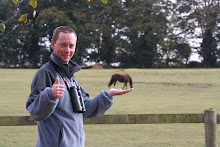The day started well with an adult Ross's goose (of unknown origin!) with the pinkies and a close adult black brant on my goose walk at Snettisham this morning.
Getting into work I was confronted with the news that there had been a flock of white-fronted geese over the reserve, another one missed! I spent a couple of hours on the computer and then headed out after lunch to spend some time showing people a bittern that had been showing well on the edge of the frozen grazing marsh. Not the best shots but you get the idea!
As I walked down the path, I picked up a group of geese flying west. They didn't sound like 'pinks' but I couldn't focus my scope on them and by the time I got Dave onto them they were too far away - probable white-fronts missed! As we were showing people the bittern, a group of geese flew towards us. The sun was out by now and you could clearly see the white foreheads and black belly bars, 28 white-fronts (209)!! Amazingly we had another 12 about 30mins later.
What was even more satisfying was the fact we managed to show at least 20 people their first ever bittern just standing around on the ice - a fitting way to end the year.
I wasn't sure what would happen with yearlist and writing a blog but I have really enjoyed it. There have been many highlights including the day of Iberian chiffchaff, displaying arctic terns and ending with bee-eater, alpine swift, finally catching up with buff-breasted sandpiper, 5 black-winged stilts, 2 summer plumaged black-necked grebes in May, the opening of the new Parrinder Hide, Pallas's warbler, 200 waxwings in a week and a male Monties on my birthday to name a few. I have ended the year beating my target and it would have been nice to have caught up with at least 4 species over the last week but you can't have everything!.
So am I going to 210 in 2011? In a word....no. We are going to be away for 2 weeks in the spring and to get anywhere near this target you need to be here in May so I am setting some different goals.
1. Find a 1st for Titchwell
2. Take my British list to 400 (391 now)but not to leave Norfolk
3. Do more ringing
4. Do more moth trapping.
5. Keep the blog going and post more photos
Hope it hasn't been too dull and you have found something of interest to read.




























 redpoll although a very pale one. As someone I know once said...'it's an educational bird!'
redpoll although a very pale one. As someone I know once said...'it's an educational bird!'




















